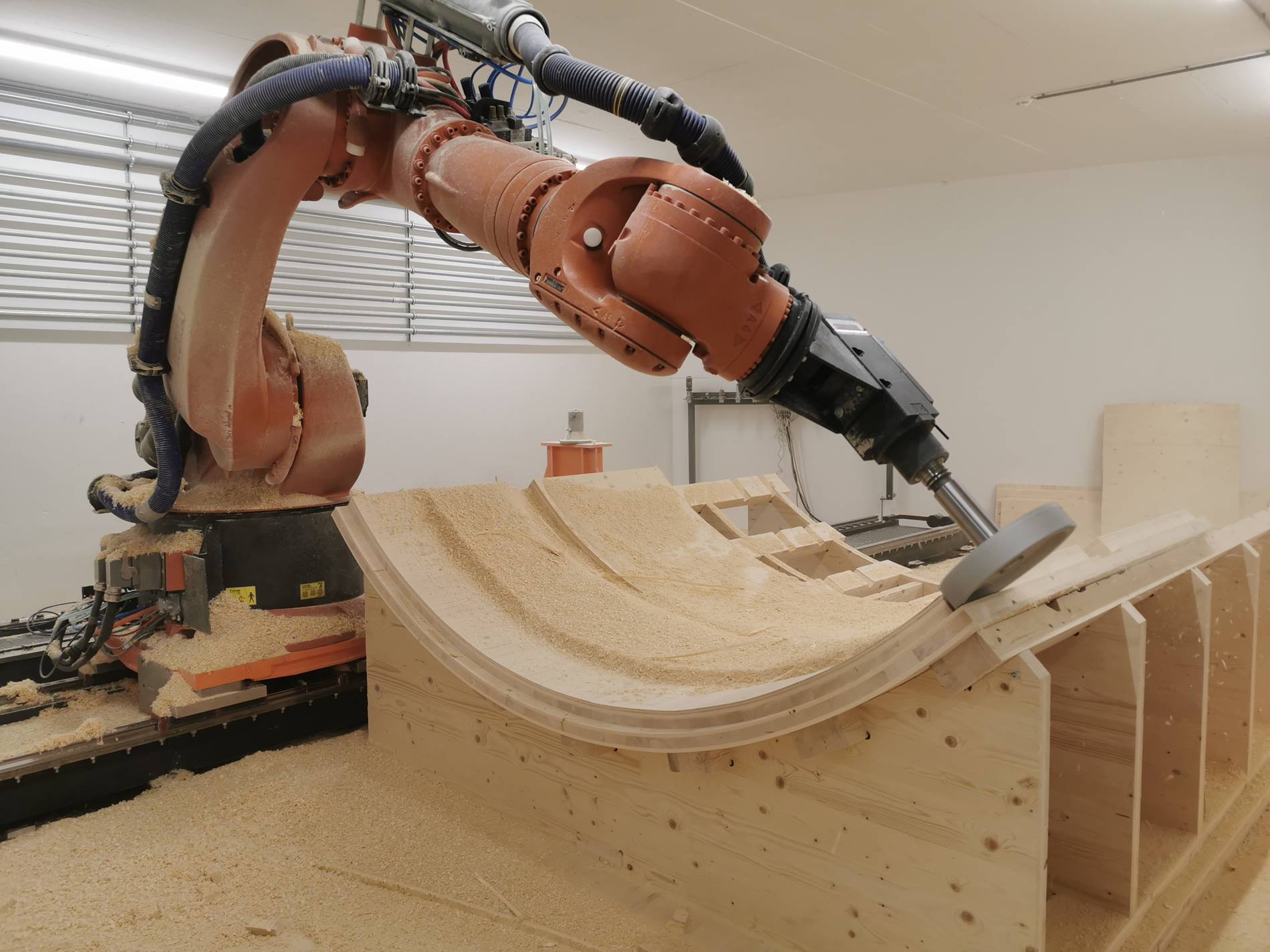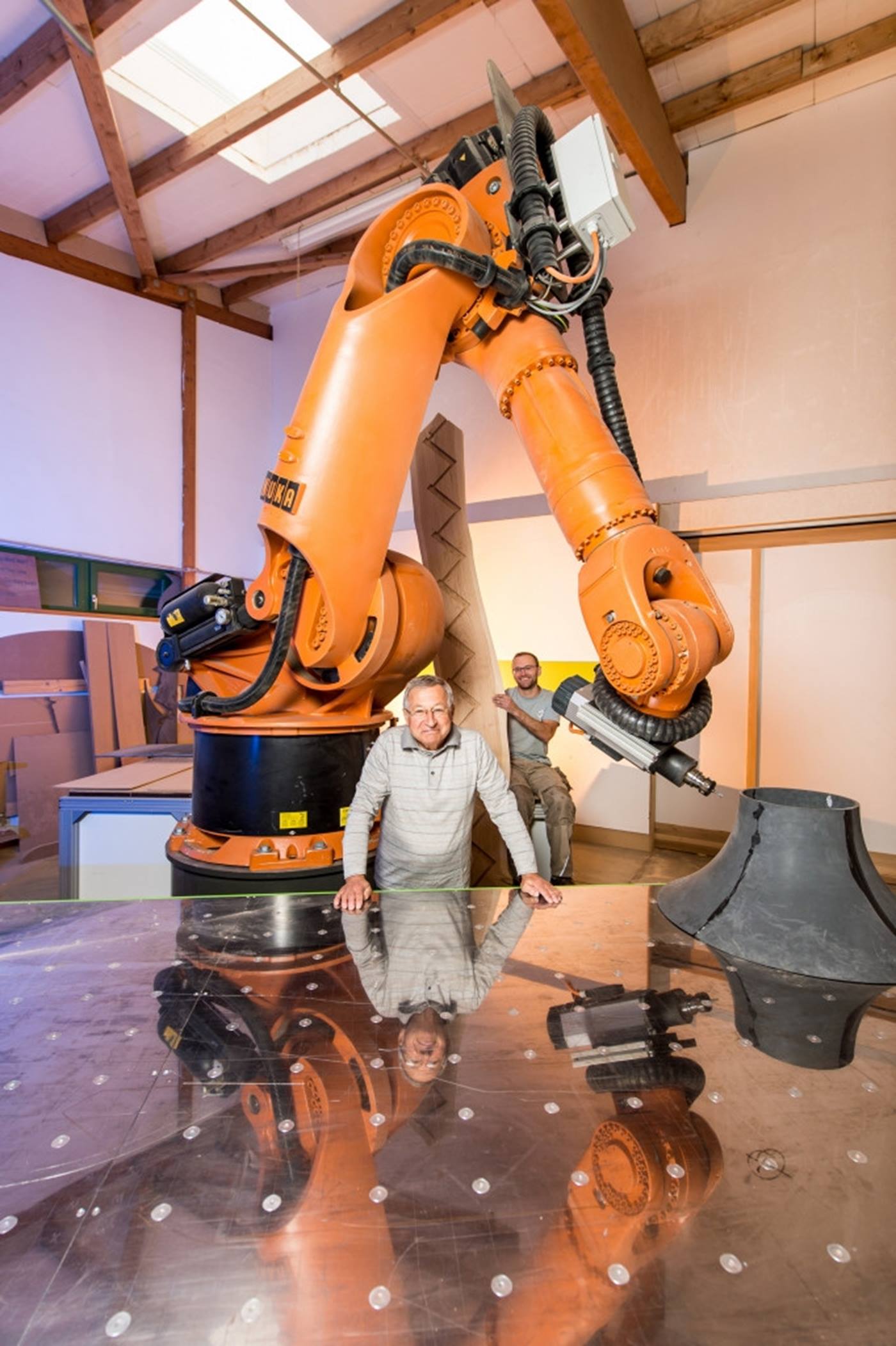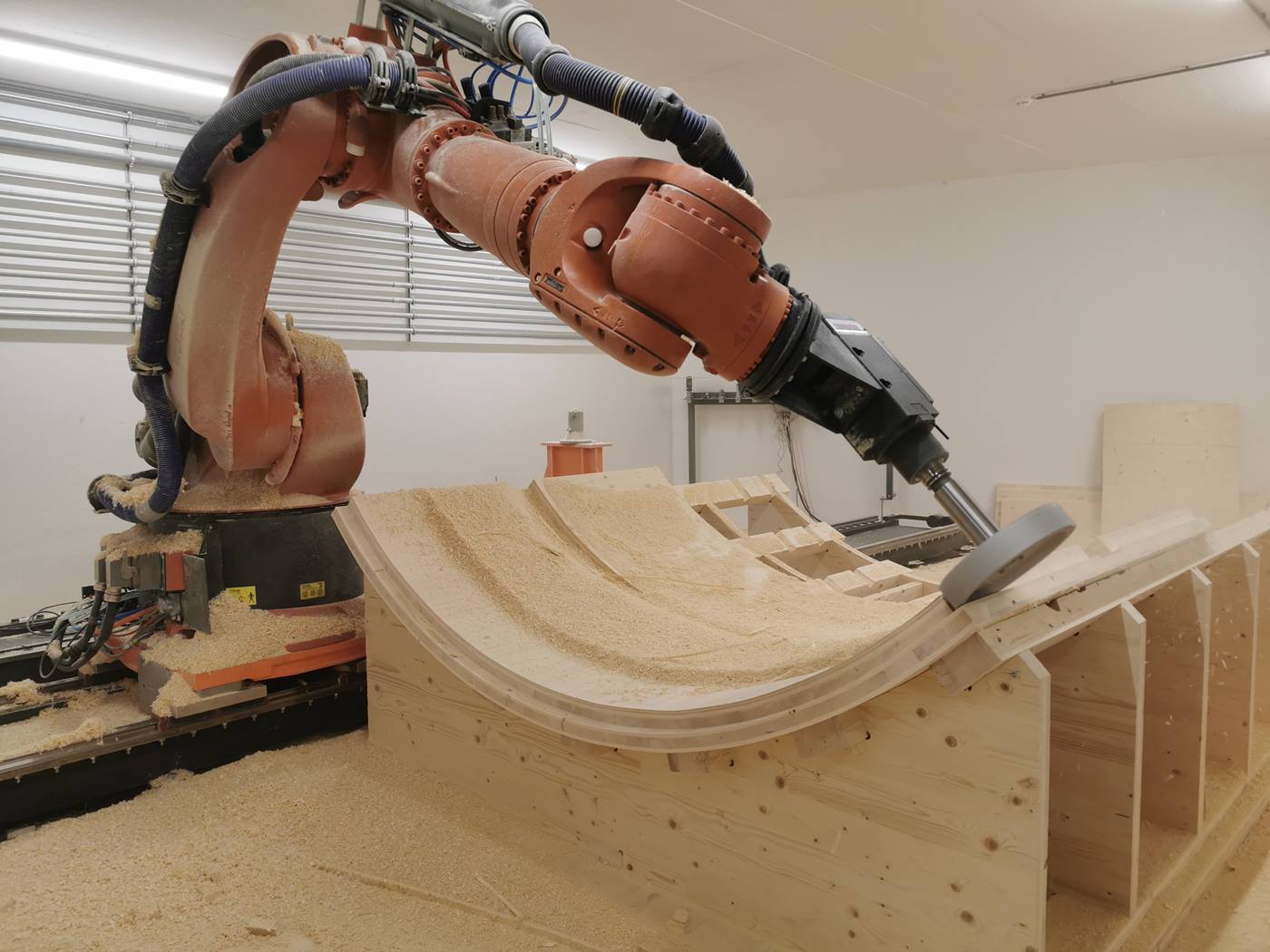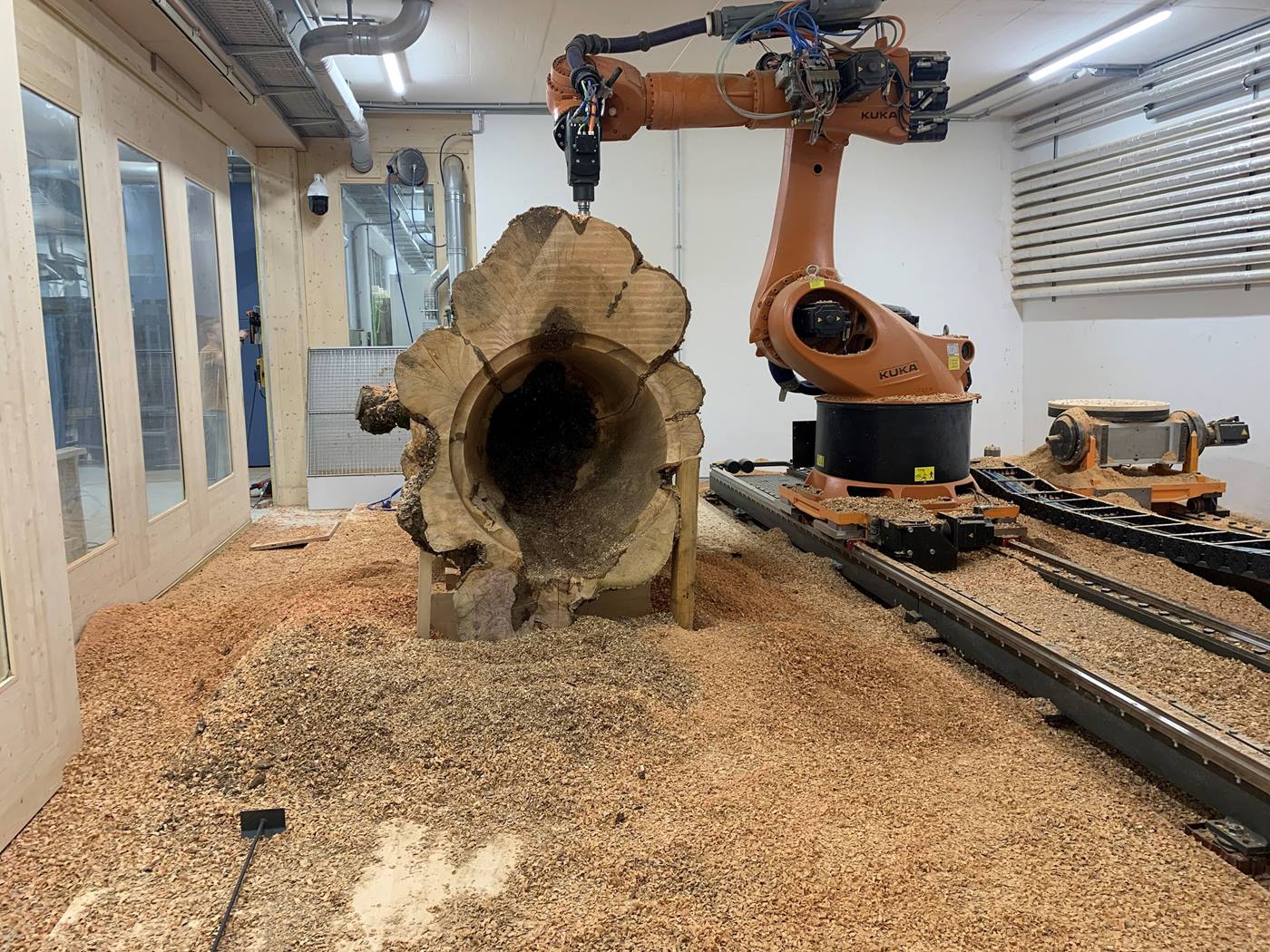Future Potential Follows Initial Skepticism
"Instead of laying off employees, we actually hired two more," Decker says. Other joineries from the surrounding area would have special parts made by them. In addition, he says, the company has become more attractive to trainees, who also learn CNC skills in a four-year carpentry technician training program. Decker's conclusion on the acquisition of the robot: "You really have to dare to take this step - and also become a little inventive yourself. But it's worth it."
Eigenstetter is already working on the next project with the local Fraunhofer Institute. "We want to use smaller robots in medium series on carpentry machines such as a milling machine or a belt sander according to the part-to-tool principle," he explains. The parts to be machined are placed in the machines by robots. He sees great potential for the future in this area.




